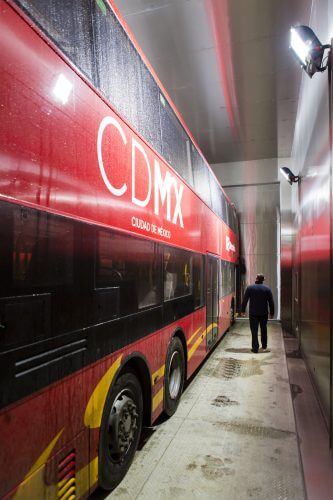
Millbrook Group has completed work on its large climatic chamber at Millbrook Proving Ground in Bedfordshire. It will be used to conduct environmental tests on commercial, public service, and military vehicles.
The chamber is capable of testing to customer specifications and industry standards. It can be used to conduct procedures in temperatures as low as -60°C, and up to 85°C to test a vehicle’s performance in even the most extreme temperatures found across the globe. That is supported by being able to create relative humidity levels from 3% up to 98%.
At 13.7m long, 5.7m wide and 6m high (internal measurements), and with a vehicle door opening measuring 5.1m x 5.0m, the facility will comfortably accommodate most conventional commercial or public service vehicles.
International manufacturers can use the chamber to ensure the vehicle remains reliable in a variety of settings, through durability testing of components and materials in icy or humid conditions. The chamber can also serve as a climatic ‘soak’ chamber, capable of taking a vehicle’s temperature to any required extreme, prior to emissions testing with Millbrook’s PEMS equipment.
Darren Williams, Principal Engineer – test methodologies at Millbrook, said: “The possibilities for testing in the facility are so varied, and there are very few limitations outside of the physical specifications.
“For example, the retaining function of doors in any temperature is of particular importance for a public service vehicle. The facility can be used to test that at the development stage and ensure the product is right by the time it reaches service.”
Temperature and humidity settings can be changed during use, thus simulating how a vehicle may respond to variable day and night conditions. The facility also has solar array compatibility to accurately recreate solar load on a vehicle, in addition to the changing temperatures.

